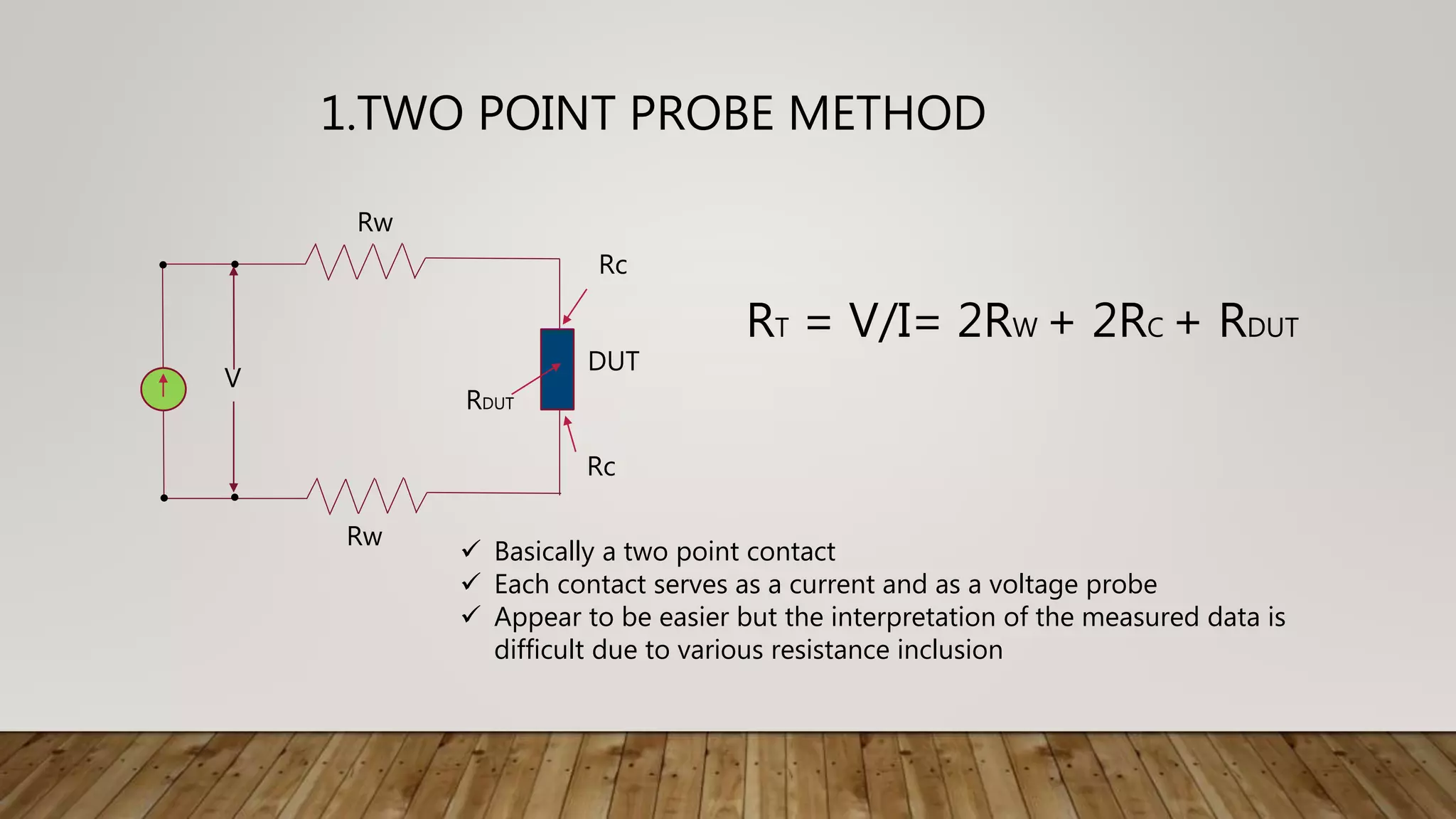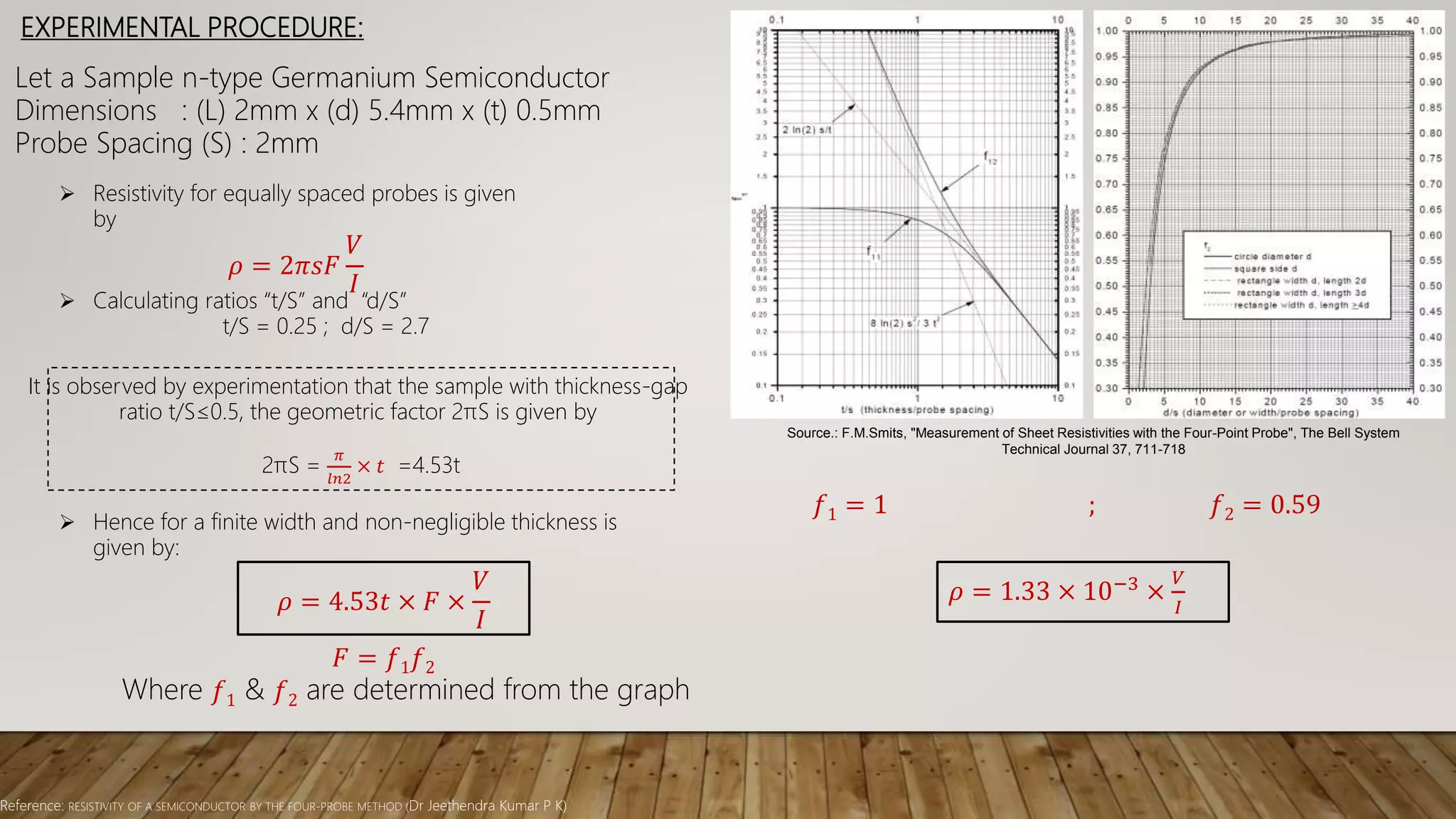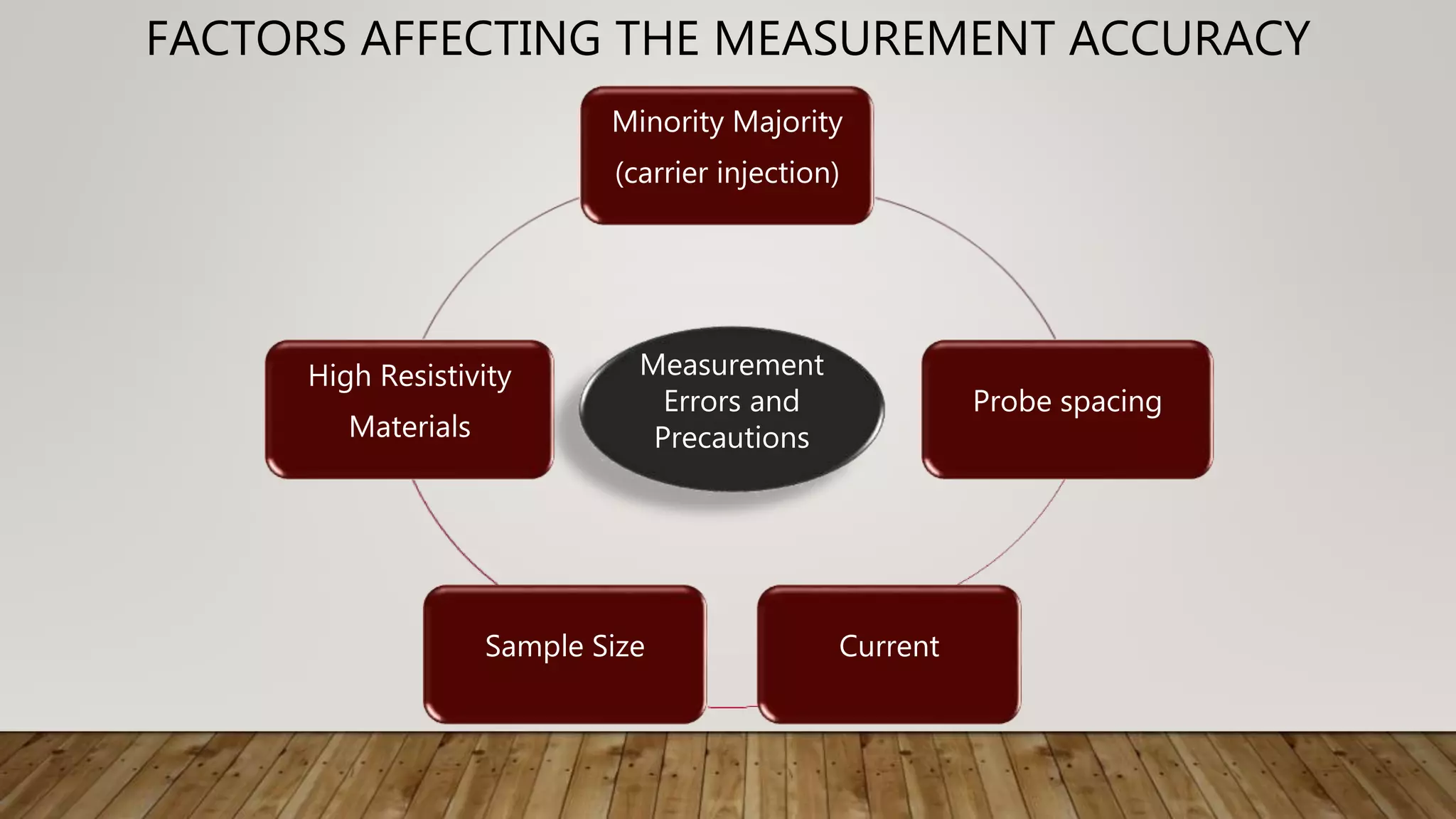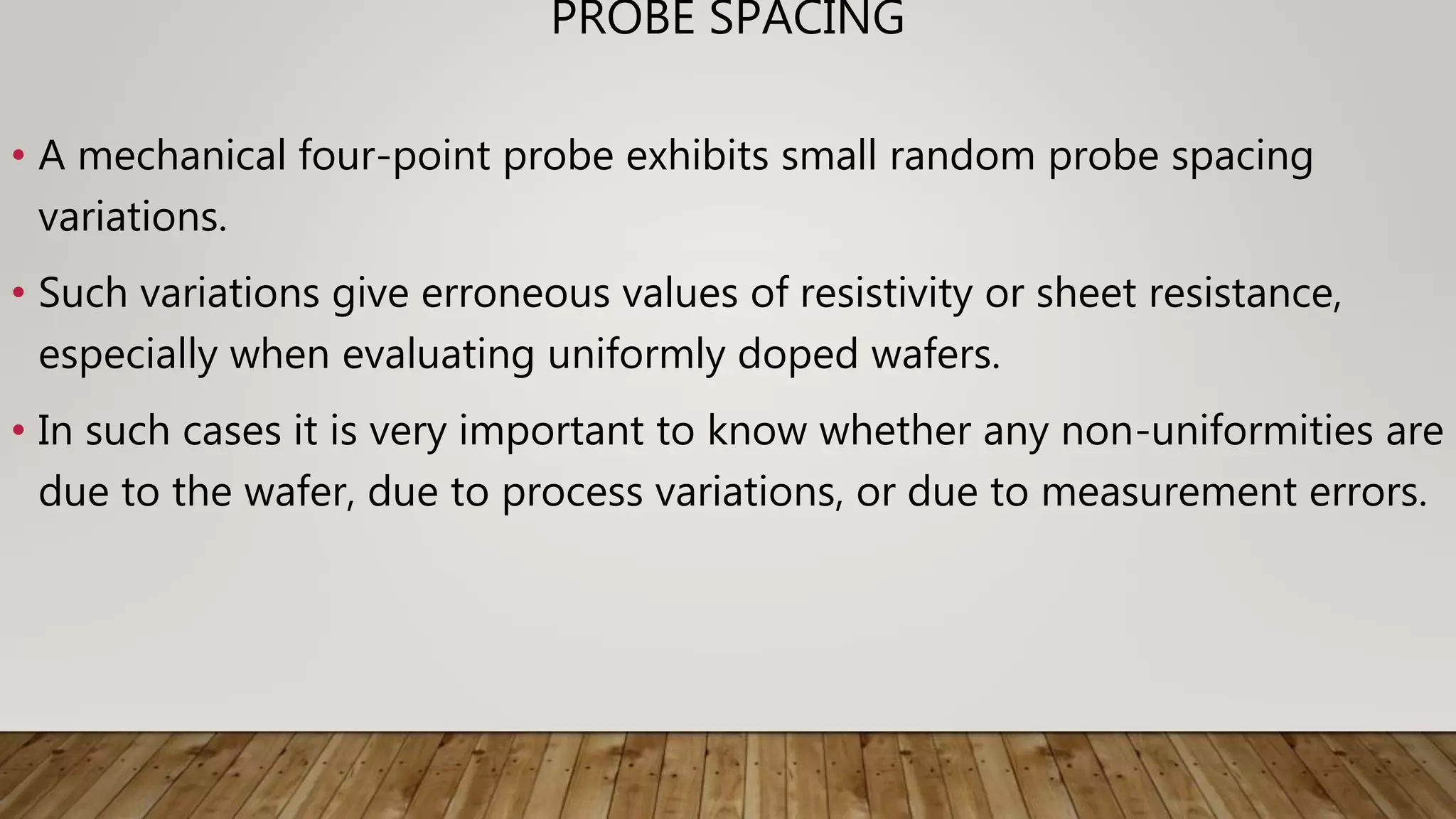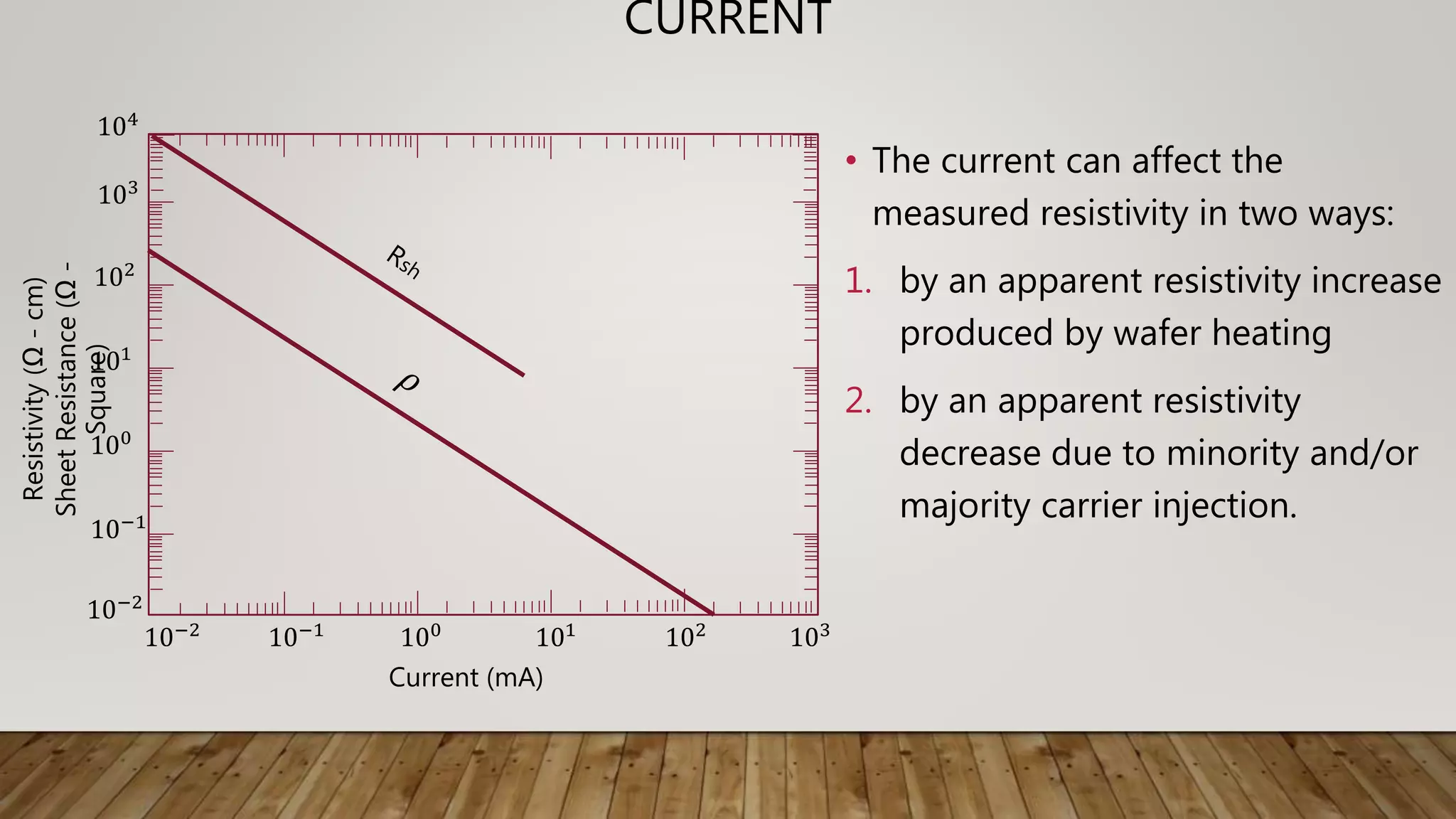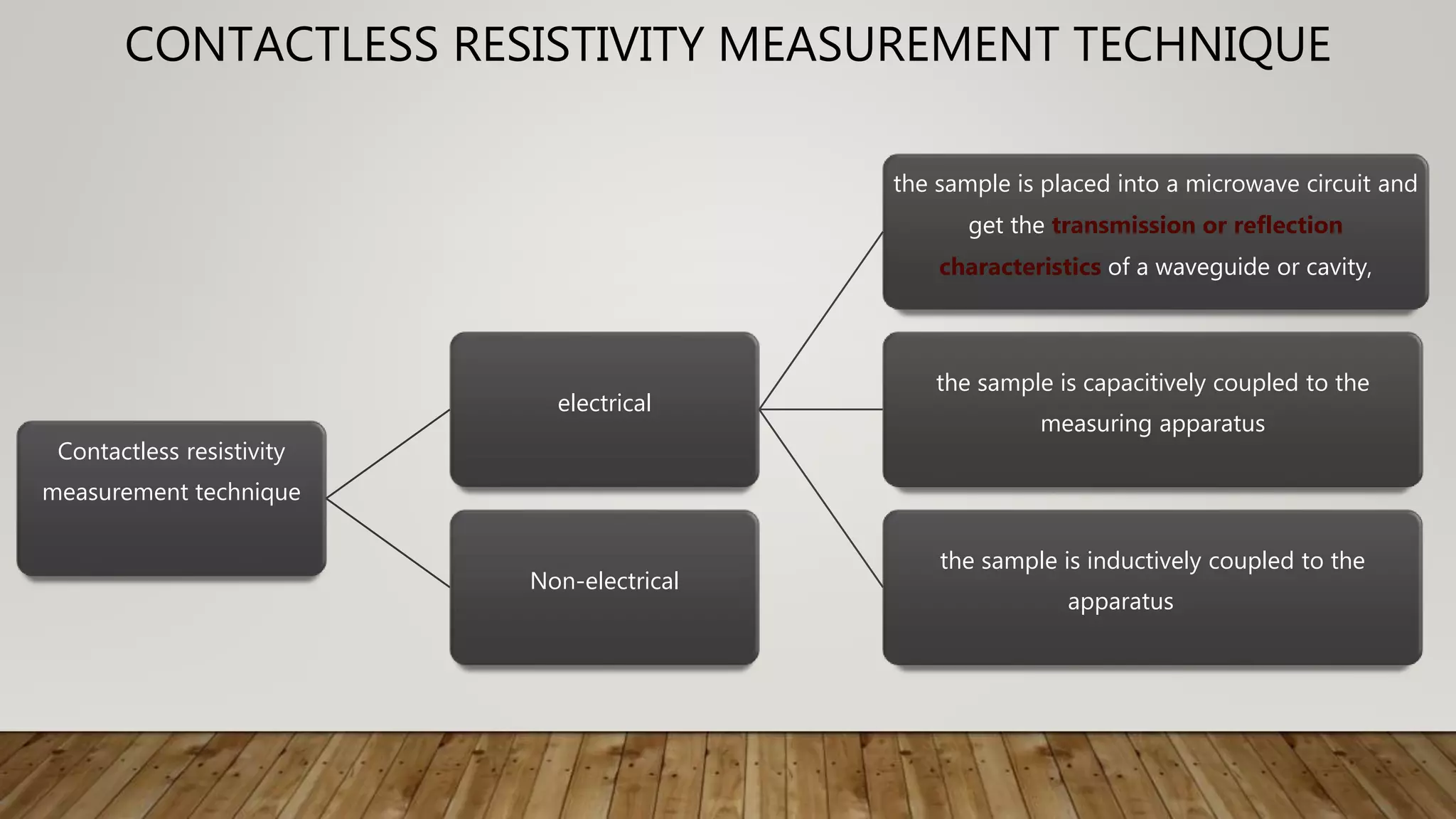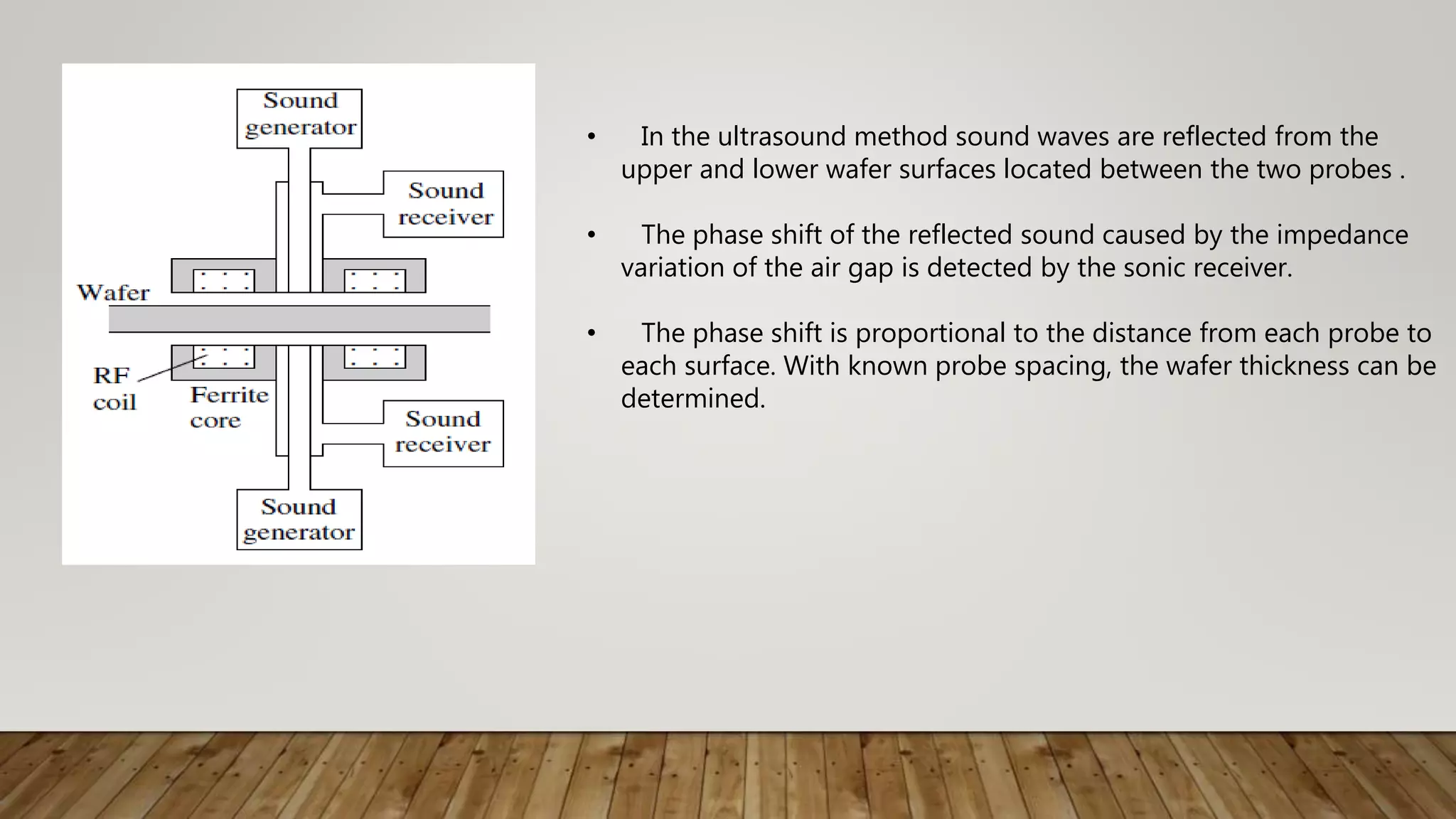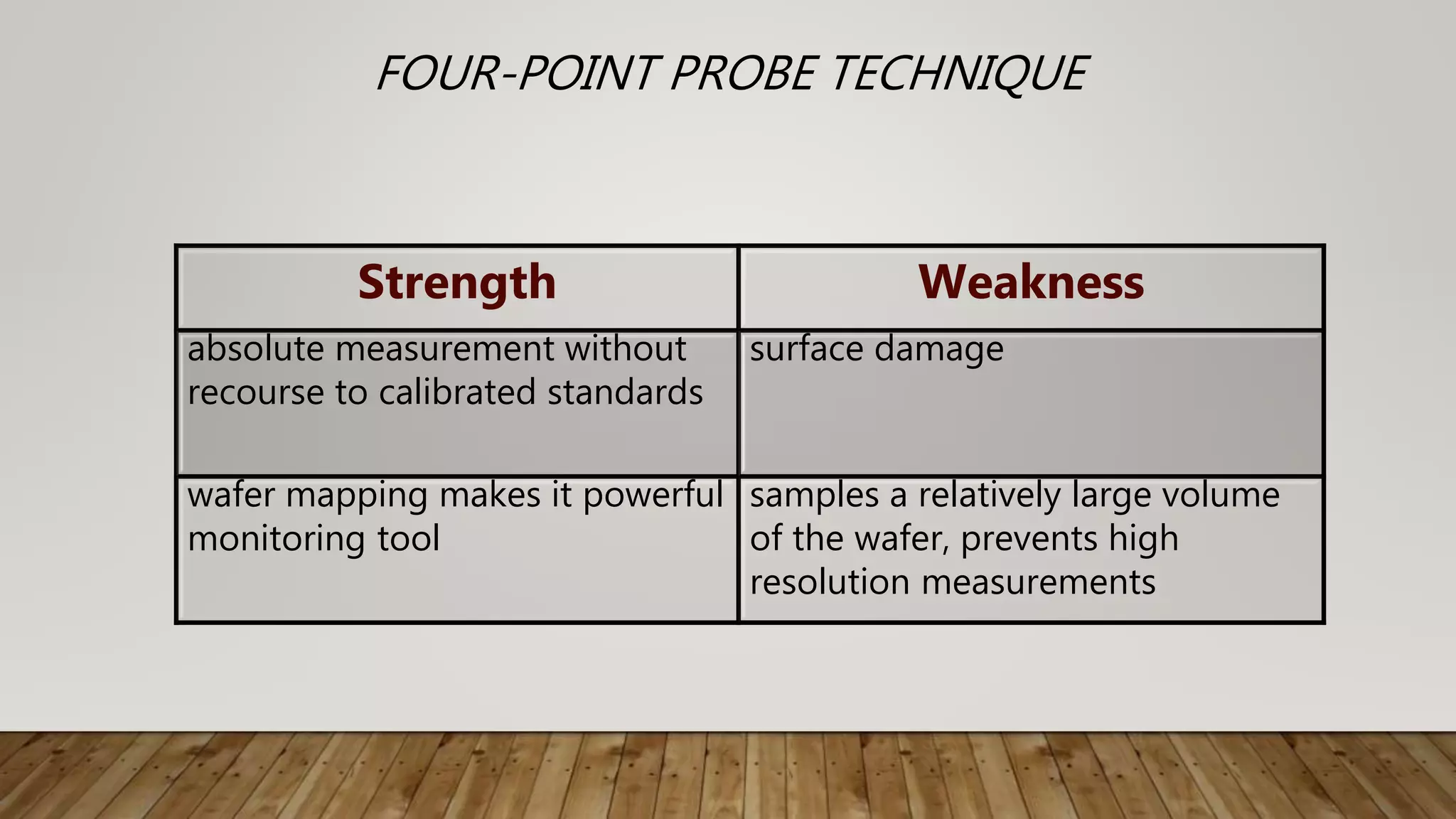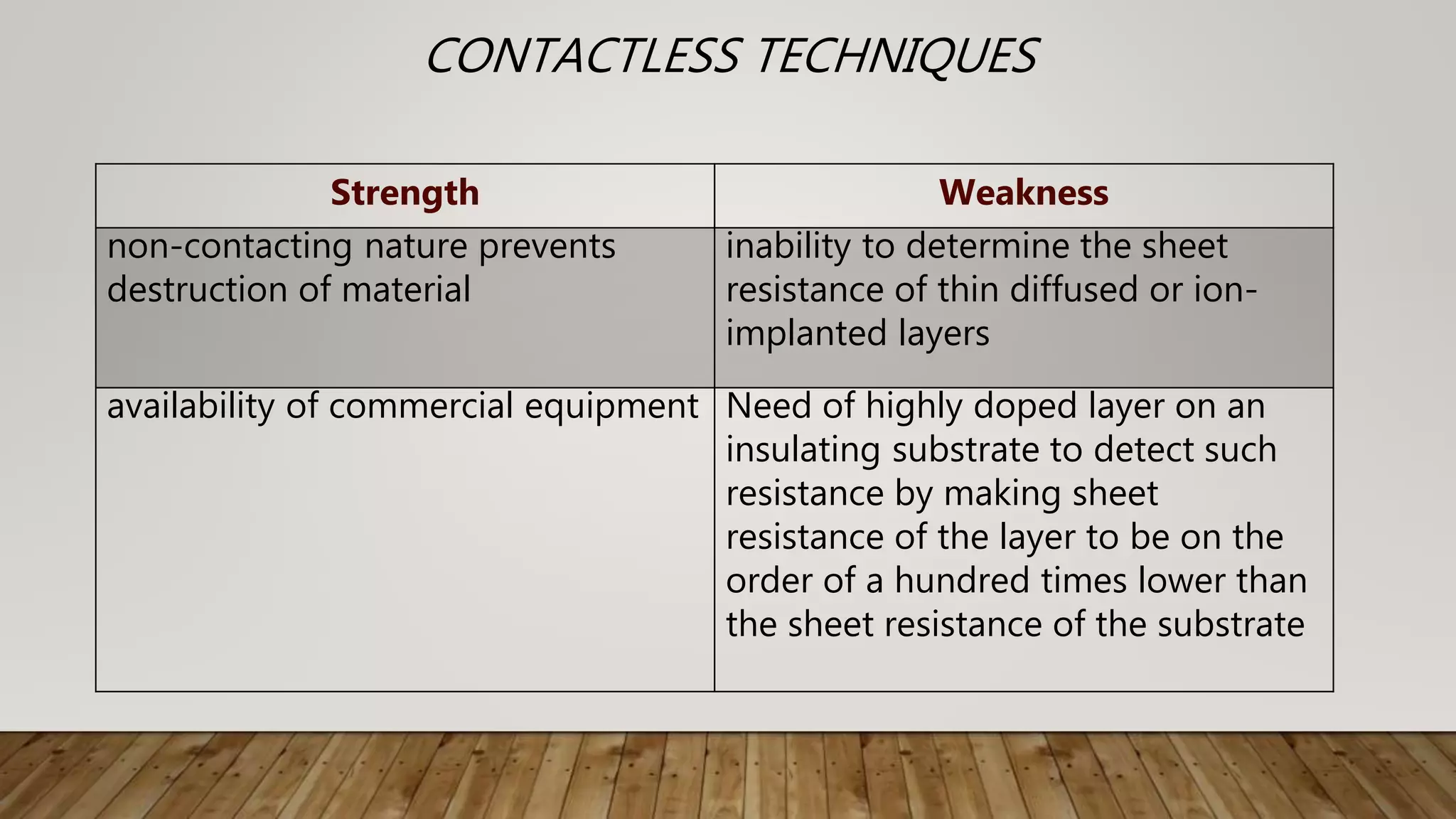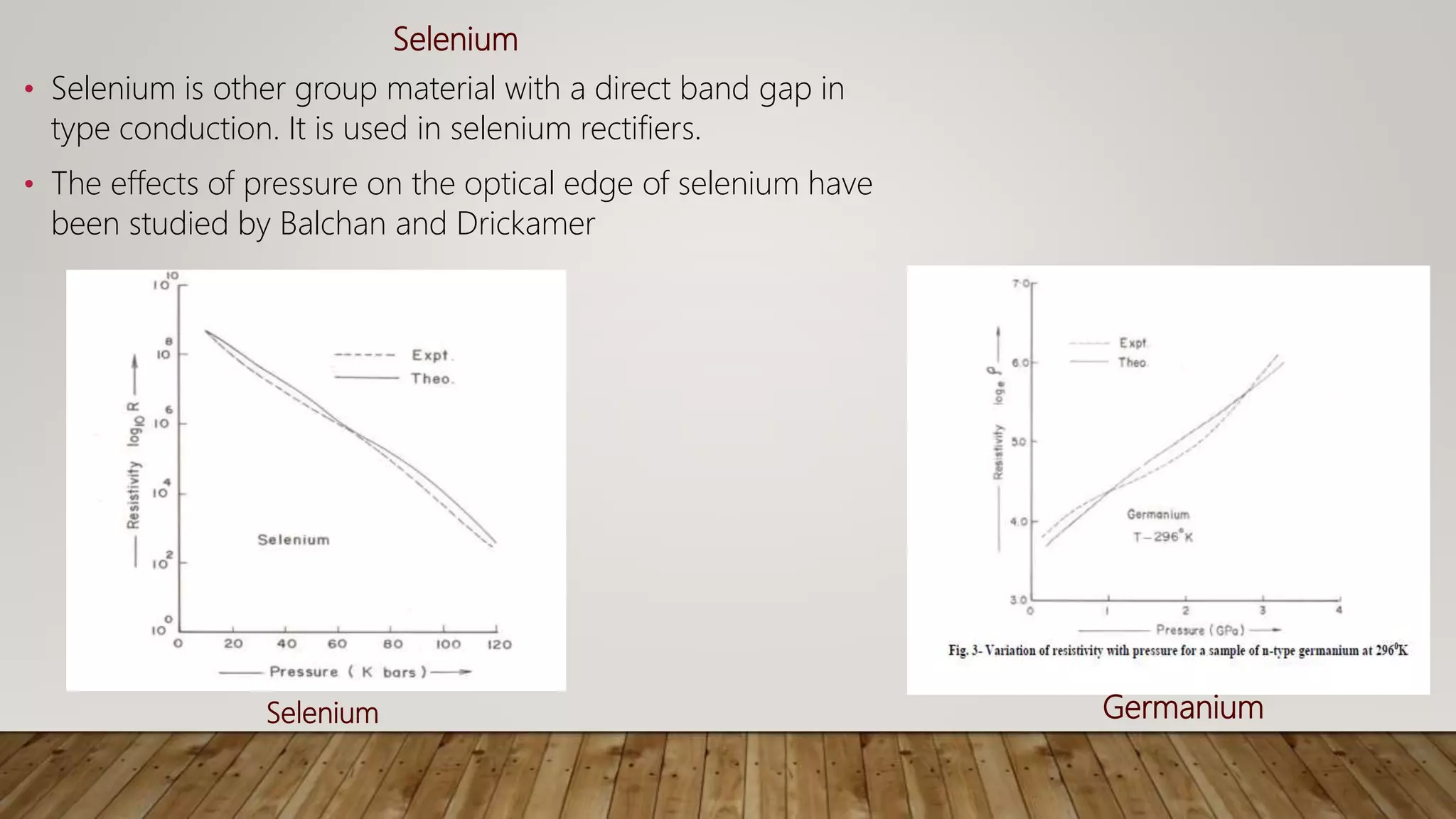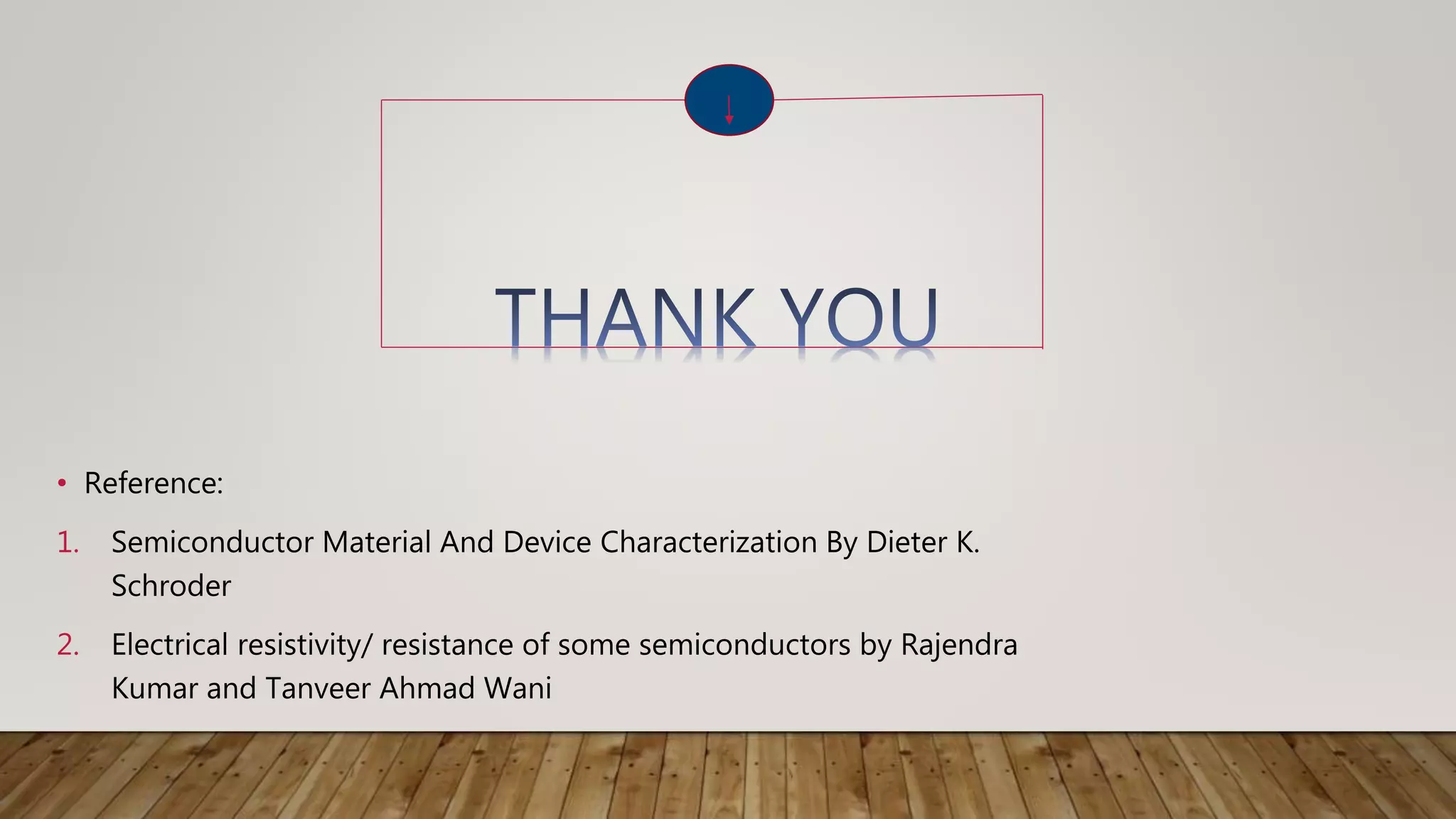The document discusses techniques for measuring resistivity and mapping resistivity variations across semiconductor wafers. It begins by defining resistivity and listing typical resistivity values for different materials. It then describes two common measurement techniques: two-point probe and four-point probe. Four-point probe is more accurate as it eliminates lead and contact resistance. Factors that affect measurement accuracy like sample size, carrier injection, and probe spacing are also covered. The document concludes by explaining techniques for wafer mapping like double implant, modulated photoreflectance, and optical densitometry.




